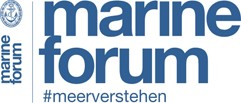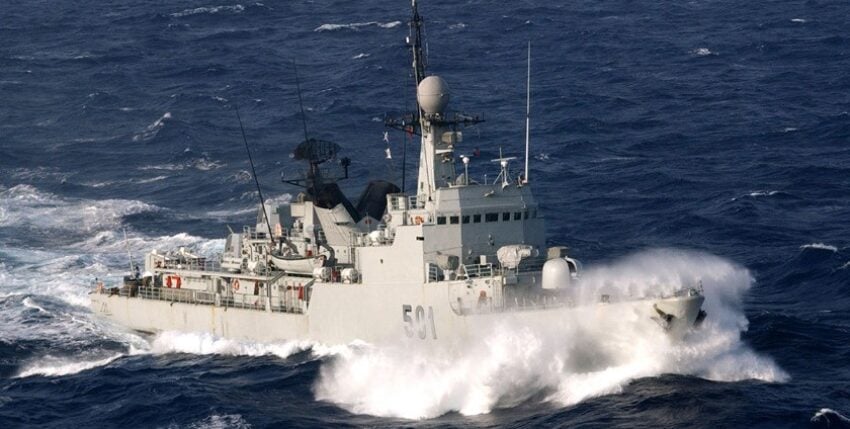Corvettes from Germany can be found all over the world today. They are known for their high quality and reliability.
Cologne, Emden, Karlsruhe, Augsburg, Lübeck - these are the traditional names of the second construction batch of five frigates of the Bremen class. Corvettes of the Braunschweig class. The first two units of the new K 130 class built by the K 130 consortium Corvettes are currently being fitted out at the Blohm+Voss shipyard in Hamburg, and the following three units are under construction.
Over the next few years, the new ships will be successively added to the 1st Corvette Squadron in Warnemünde, thus increasing the number of units stationed there from five to ten. Efforts are currently underway to commission a third construction lot of the Braunschweig class, which will replace the five Corvettes of the first batch - instead of bringing the first five units up to the standard of the second construction batch in lengthy shipyard layovers. The ships from the first construction batch could then be handed over to partner navies in the Baltic Sea region. So far, this project has failed due to financing issues. However, the events in Ukraine and the planned massive increase in the German defence budget for the coming years mean that the plan is now within reach. In the German Navy, the 89 metre long, 13 metre wide and 1840 tonne displacement Corvettes has developed into a successful model. Examples include the Unifil missions off the coast of Lebanon and the current connection of the corvette Erfurt to the Standing NATO Maritime Group 1 (SNMG 1) to reinforce NATO's northern flank. Classified by NATO as light frigates - hence the F designations - the ships of the Braunschweig class are large enough for worldwide operations. Due to their relatively shallow draught of just 3.4 metres, the ships are ideally suited for operations in marginal seas and in the shallow coastal foreland. Powerful armament with RBS 15 anti-ship missiles and a relatively small crew of just 60 people due to the high level of automation make the Braunschweig class particularly efficient.
German corvette development
According to the common definition, a Corvette The Braunschweig class is the smallest unit that can be considered a "proper" warship - between speedboats, patrol vessels and frigates in terms of size. One might think that the Braunschweig class, the first German Corvettes after the Second World War. In fact, however, the German Corvette development of the post-war period back to the 1960s. If one includes the five Thetis-class submarines that entered service with the German Navy between July 1961 and August 1963, then one can assume a Corvette development from the second half of the 1950s. The boats, which were almost 70 metres long, 8.2 metres wide and displaced 658 tonnes, were built at the Roland shipyard in Bremen from 1959. These units, which were equipped with sub-hunting missile launchers, mines and depth charges, were alternately categorised as torpedo fishing boats, fleet service boats and sub-hunting boats by the German Navy until they were decommissioned in the early 1990s and subsequently sold to Greece. They were designed for the recovery of practice torpedoes, for submarine hunting and convoy escort and usually travelled with a "P" identification. In 1960, Atlaswerke in Bremen laid the keel of the Hans Bürkner, a single vessel that was very similar in design to the Thetis class, but was almost twice as large with a length of 80.60 metres and a displacement of 1347 tonnes. With largely the same armament as the Thetis class, the Hans Bürkner served as a training boat at the naval underwater weapons school from 1963, before this unit was transferred to test centre 71 in Eckernförde in 1969 as a test boat with a reduced crew.
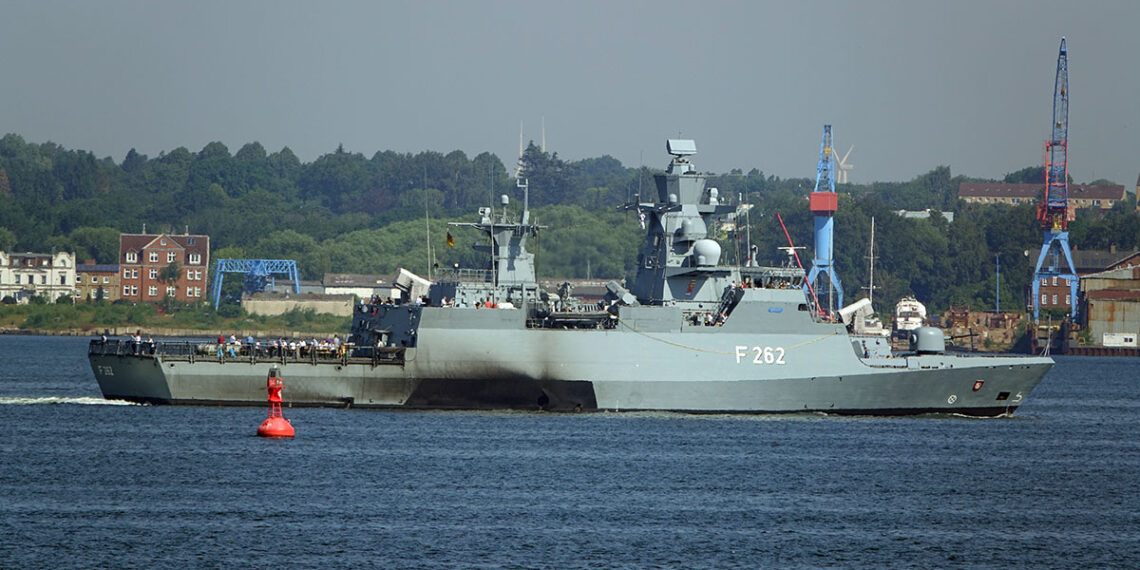
The "right" West German Corvette development finally began in the mid-1960s with the receipt of an export order from Portugal, which was still an African colonial power at the time. Together with the Spanish Bazán shipyard, Blohm+Voss built three Corvettes of the João Coutinho class, which were partly based on designs by the Portuguese admiral Rogério de Olivera. Three units were built in Hamburg and three more in Ferrol, all of which entered service with the Portuguese Navy between May 1970 and June 1971. They used the 85 metre long, 10.3 metre wide and 1380 tonne displacement ships as "gunboats" without any missile armament in the waters around Mozambique, Angola and Guinea-Bissau. Today, one unit of the João Coutinho class is still in service as an ocean patrol boat, which is soon to be replaced by a new unit of the Viana do Castelo class. Interestingly, the João Coutinho class, inspired by the British Leander frigates, has a forward part of the forecastle deck raised by a kink to protect the 76-millimetre gun from overcoming waves. Between November 1974 and February 1976, four improved stragglers of the Baptista de Andrade class, which had been built entirely in Spain, were put into service. Here, the ship design was further developed in co-operation with Blohm+Voss as the Descubierta class for the Spanish Navy. The total of nine 88 metre long ships with a displacement of 1230 tonnes were built in the late 1970s and early 1980s at the Bazan shipyards in Cartagena and Ferrol, six units went to the Armada Española, two units were sold to the Egyptian Navy before delivery, while an additional ship was built for the Moroccan Navy. In contrast to its predecessors, the Descubierta class has missile armament (Sea Sparrow air defence missiles and Harpoon anti-ship missiles) and four instead of two diesel engines for propulsion.
Successful Meko design
The design of the João Coutinho class also formed the foundation for the first small frigates developed in Germany according to the Meko design, which were designed for the Argentine Navy. Argentina had already ordered four Almirante Brown-class frigates (Meko 360 H2) from Blohm+Voss in the 1970s, so it made sense to also order the planned smaller naval units of the Argentine fleet construction programme from Blohm+Voss. The six units of the Espora class (Meko 140 A16) were built between 1980 and 1985 at the Río Santiago shipyard in La Plata with material support from Blohm+Voss. The 91 metre long, 11 metre wide and 1560 tonne displacement ships were only commissioned by the Armada de la República Argentina between 1985 and 2004 due to serious, largely budget-related delays in the outfitting phase. In particular, the propulsion concept based on two medium-speed, reversible Pielstick diesel engines was adopted from the preceding João Coutinho class. In addition to a 76-millimetre gun, the armament of the Espora class includes four Exocet MM38 anti-ship missiles, two triple 324-millimetre torpedo tubes and a depth charge rail. The last two units were fitted with an extendable telescopic hangar for an Alouette III sub-hunting helicopter. It is currently unclear how many of the six Espora-class units are operational. According to unconfirmed reports, one ship was already scheduled for scrapping in 2021.
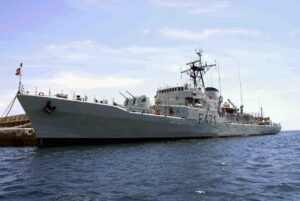
The Kiel shipyard HDW made its first forays into military surface shipbuilding in the 1980s. After HDW delivered two Type 209 submarines to Colombia in 1972, the shipyard shortly afterwards received an order to build four light frigates, which were delivered to the Armada Nacional de la República de Colombia in 1983/84. The design of the four ships, known as the Almirante Padilla class (type FS 1500) Corvettes was the result of HDW's collaboration with Marinetechnik Planungsgesellschaft in Hamburg (MTG, now known as MTG Marinetechnik). The 99.1 metre long, 11.3 metre wide and 2100 tonne displacement Almirante Padilla class with its "box-shaped" deck superstructure corresponded to the usual naval standards of the time and is equipped with a weapon mix of eight Korean SSM-700K Hae Sung I (Sea Star) anti-ship missiles, two European Simbad air defence missiles and a 76 millimetre gun from Oto Melara. In February 1981, HDW received an order from Malaysia to build two more FS 1500 ships. Both ships of the Kasturi class were delivered to the Royal Malaysian Navy in August 1984. They are equipped with a 57-millimetre gun, eight Exocet MM40 Block 2 missiles and shoulder-launched Manpad air defence weapons. While the Colombian ships are each equipped with a German-made MBB BO 105 helicopter, the Malaysian Navy uses the British Westland Lnyx. Both navies have opted for four MTU 20 V 1163 diesel engines of various subtypes as propulsion.
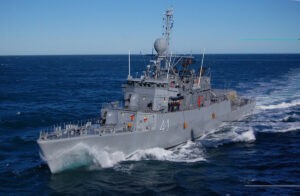
Apparently, Malaysia was satisfied with the quality of the Corvettes and turned to Germany again for a major order in the 1990s. In September 1998, the Malaysian government signed a contract with a group of companies led by Blohm+Voss for an initial six ocean patrol boats, of which the first two units were to be largely manufactured in Hamburg and the last four units at Penang Shipbuilding and Construction - Naval Dockyard (PCS-ND). A total of 27 ships were planned to replace various older patrol boats from the early days of the Malaysian Navy. The new corvettes are based on the Meko-100 RMN design, which a few years later served in part as the basis for the German Brunswick-class corvettes. Unlike the German ships, the 1850 tonne, 91 metre long Malaysian units of the Kedah class lack any missile armament, which is why these ships are only classified as Offshore Patrol Vessels (OPV). Financing problems and a corruption scandal delayed the completion of the first two units, which were laid down in Hamburg in 2001 and delivered to Malaysia for final outfitting by dock ship, by a total of 18 months. Due to great public pressure, the Malaysian government forced PCS-ND to merge with the semi-state-owned Boustead Holding and complete the production of the remaining four units in the country as Boustead Naval Shipyard. By December 2010, all six units of the Kedah class had been commissioned. The purchase of the originally planned additional 21 ships was postponed for the time being. Despite several attempts to resume production of the Kedah class, the Malaysian government repeatedly failed to secure funding.
Reduced armament
The Meko-100 design also forms the basis for the Polish Gawron class. A construction contract for seven Multifunctional corvettes was concluded between Blohm+Voss and the Polish Navy on 27 November 2001. Stocznia Marynarki Wojennej in Gdynia was to act as the shipyard for the 95 metre long ships, which would displace up to 2050 tonnes. Just one year later, however, the project ran out of money and in December 2002 the construction programme was reduced to a single unit. This was put into service as ORP Ślązak (241) on 28 November 2019 after a construction period of around 18 years. At this time, the extensive missile armament consisting of the RIM-162 Evolved SeaSparrow Missile (ESSM), RIM-116 Rolling Airframe Missile and RBS 15 had already been abandoned for budget reasons, which is why the Ślązak was only put into service as an ocean patrol boat with a 76-millimetre gun and shoulder-launched Grom air defence missiles. For the first time on a German Corvette A combined diesel and gas propulsion system (Codag) consisting of a GE LM2500+ gas turbine and two MTU 12V595TE90 diesel engines was used for this single vessel.
The latest Corvettes The four Israeli ships of the Sa'ar-6 class, which were built as a joint project between German Naval Yards and Thyssenkrupp Marine Systems in Kiel, were delivered to the Israeli Navy between 2020 and 2021. These boats, also known as the Magen class, are partly based on the Braunschweig class, but have a helicopter hangar and are significantly more heavily armed than the German ships. The four units were built at German Naval Yards and then transferred to Haifa in Israel, where the majority of the sensors and effectors are installed - including an Adir phased array radar (ELM-2248), 32 Barak-8 air defence missiles. Also on board is a C-Dome air defence system based on the tried-and-tested Iron Dome system, which has been used to fend off countless missile attacks on Israeli cities since 2010. The Magen-class ships are 92 metres long and displace around 2000 tonnes.
Outlook
Construction of the first of four Tamandaré-class multipurpose frigates began in Brazil in 2021. With a length of 107 metres and a displacement of 3,500 tonnes, they are similar in size to a classic Corvette have already outgrown them. These ships, which are also based on the Meko A-100 design - albeit significantly larger - are being built in Itajaí as a joint project between Thyssenkrupp Marine Systems and the Brazilian defence company Embraer. The current high global demand for ships in Corvette size makes further sales of German Meko A-100 ships likely.
Stefan Ulsamer is a freelance journalist specialising in marine technology.
Stefan Ulsamer
